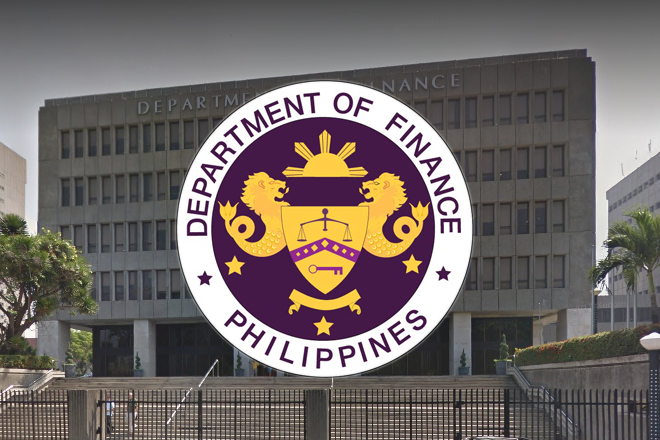Philippines fully backing AIIB, Belt and Road initiative
October 3, 2017
SHANGHAI—Finance Secretary Carlos Dominguez III has assured China of the Philippines’ full cooperation with the Asian Infrastructure Investment Bank (AIIB) and the Belt and Road program, both of which, he said, will “bring lasting benefits to all countries of this region” as these “will set the conditions for more comprehensive trade” in this part of the world.
Dominguez thanked China for its generosity in supporting the Duterte administration’s ambitious infrastructure modernization program, noting that “over the past few years, we have developed numerous bilateral mechanisms that will allow closer coordination between our two countries across a broad range of issues and concerns,” a statement from the Department of Finance said Tuesday.
“These bilateral mechanisms are the scaffoldings helping us build a truly functional bilateral relationship,” said Dominguez at a briefing on the Philippine economy organized by the Bank of China at the Shangri-la, Pudong here.
Given the “great strides” that have been achieved towards building a common market among the Philippines and the other member-economies of the Association of Southeast Asian Nations (ASEAN), which will create a large enough market to make their industries achieve economies of scale, Dominguez said the Philippine economy can “perform as a gateway to a very large and increasingly prosperous Southeast Asian regional market.”
Dominguez said he believes the comprehensive cooperation between the Philippines in China, while currently only in its early stages, will “function as a driver of growth in the region” over the next decade.
“We are grateful for the enthusiastic support China has offered to help as grow our economy rapidly. I am sure there are many complementary points that will ensure the sustained growth of an inclusive economy in the Philippines,” Dominguez said.
“There is much to look forward to in our trade and investment partnership. There is much ground for optimism in the vitality of this partnership,” he added.
Dominguez said while the Philippines and China have been good friends historically, their development ties “may be said to have blossomed only recently” following two significant initiatives from Beijing, namely its effort to build a distinct financial community for the region via the AIIB and the Belt and Road initiative, “which might be considered the largest and most comprehensive cooperation project of this century.”
“The Philippines is happy to cooperate with both the Asian Infrastructure Investment Bank and the Belt and Road program. Both initiatives will bring lasting benefits to all countries of this region. Both will set the conditions for more comprehensive trade among the countries in this part of the world,” Dominguez said.
Dominguez said China has shown “immense goodwill” to the Philippines by offering to build two bridges in the Manila area—the Binondo-Intramuros Bridge and the Estrella-Pantaleon Bridge—that will both help ease traffic congestion in these areas.
He noted that the Philippine economy benefits from numerous investments committed by Chinese enterprises, the increased tourist flow from China, and the expanding bilateral trade between the two countries.
Bilateral trade between Manila and Beijing amounted to $12.32 billion in 2011, which grew dramatically to $21.6 billion in 2016.
In 2011, the Philippines received 243,137 tourists from mainland China which ballooned to 675,663 visitors in 2016.
“In a couple of years, we expect China to become our most important partner in trade. The benefits to both our economies are enormous,” Dominguez said.
He said the Philippine economy has become “an engine of growth” in Asia, with its second quarter GDP expanding by 6.5 percent, which is well on track in meeting the full-year target growth rate of 6.5 to 7.5 percent.
An even more significant development is that GDP growth was led by the industry sector at 7.3 percent, and agriculture at 6.3 percent, which is a “departure from the earlier pattern where growth was led by the services sector,” Dominguez said.
OFW remittances accounted for about a tenth of the GDP and the country’s high domestic consumption demand, while government spending sped up by 7.1 percent year-on-year during the second quarter. DMS
Latest Videos
- THE UNTOLD STORY EXPERT INSIGHTS INTO THE UKRAINE
- NEGOTIATING A NEW ORDER US RUSSIA TALKS ON UKRAIN
- Ukraine: A Pawn in the Geopolitical Game? Will Trump Intervene?
- US VP VANCE CRITICIZES EUROPEAN DEMOCRACIES AT MUNICH SECURITY CONFERENCE
- UNCOVERING THE WEB OF DECEIT: CIA INFILTRATION OF THE MEDIA
- SHIFTING SANDS: TULSI GABBARD’S CONFIRMATION AND THE EVOLVING GLOBAL LANDSCAPE
- FAUCI SCANDAL: A THREAT TO GLOBAL HEALTH AND DEMOCRACY






